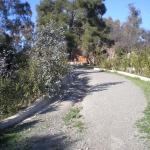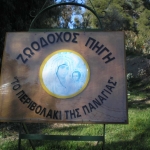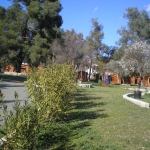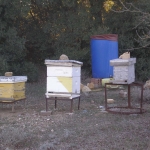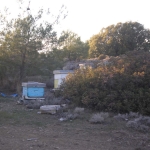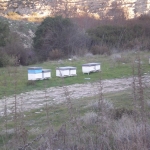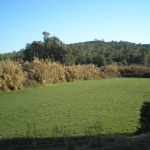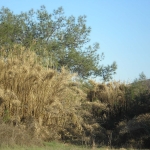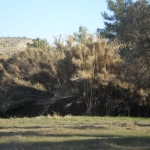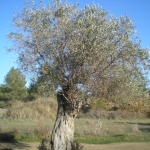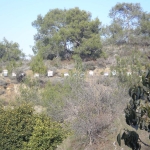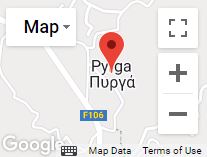Natural Environment
A green veil with wind flower “brushworks” covers the small valley of Pyrga which is embraced by the beautiful vegetated mountains of “Appidatzin”, “Ssinova”, “Vasioti”, “Efkali”, “Stavrin”, “Viklia” and “Pipi”. It is a village truly blessed with the most beautiful colours and scents of nature.
Several species of bushes, trees and other plants compose the rich flora of Pyrga. Cited below is a list with the flora species which have been detected by Papageorgiou:
|
Bushes |
Bushes |
Bushes |
Trees |
Other Plants |
| Strawberry tree | Helichrysum conglobatum (shrub or greenery) | Topped lavender | Acacia | Agave |
| Prickly Juniper | Caper | Cistus | Wild olive tree | Cane (herb) |
| Wind-briar | Castor Oil plant | Lotus | Eucalyptus | |
| Bay laurel | Rosemary | Kermes Oak | Cypress | |
| Aspalathus | Tamarisk | Greek Sage | White Cedar |
Flowers |
| Eastern Phagnalon (shrub) |
True myrtle | Mastics | Azarole (also a bush) | Tulips |
| Briar | Terebinth | Fig Opuntia | Marguerite | |
| Pine |
As Papageorgiou remarks, a special place among the beauties of Pyrga is held by the forest of Stavrovouni, which is covered in green with “tens of forest trees, wild bushes and wild flowers”. More: Stavrovouni
Source:
Kostas Papageorgiou, Pyrga, Beneath the stare of Stavrovouni, Lefkosia 2007
Olive Cultivation
Olive cultivation constitutes one of the occupations of the residents of Pyrga.
Presented below are the main cultivating cares regarding olive trees:
Preparing the ground is one of the first tasks olive cultivators need to perform. For the soil to be ready, it must be enriched with nutritious elements and be freed from pesticides.
Pruning the olive trees is very important for their productivity. This takes place either at the beginning of spring or during the harvest period. During pruning, all branches which are considered useless are cut so that only the fruit-bearing branches will remain on the tree.
The irrigation of the olive trees must be carried out with extreme care since olive trees do not require frequent irrigation. However, during the florescence period, that is during the spring months, the irrigation of the olive trees is crucial both for the increase of their production as the quality of their fruit.
The harvest period takes place from the end of October until the end of February. To collect the olives cultivators use the traditional method of caning, as well as modern methods with modern machinery.
The traditional method of caning includes beating the olive tree with a wooden stick to that the olives will fall to the ground and more specifically on the huge sheets which are previously placed under the trees. Next, the olives are put into cases and transferred to the olive oil press for the production of olive oil.
Finally, some olive cultivators follow the traditional method for the multiplication of olive trees called grafting. This particular method involves attaching a branch of olive tree to another tree, while it takes three years after it has been planted for the tree to produce any crops
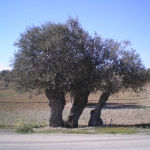

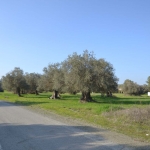
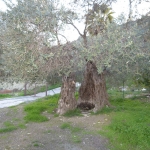
Source:
Ionas Ioannis, Traditional Cyprus Professions, Nicosia, 2001, p.487-49
Nature Trail
The Nature Trail of Pyrga is a path of exceptional natural beauty which has a length of approximately 2000 metres. The trail begins from the location “Krya Vrysi” and ends at the location “Kamares”.
During their stroll along the Trail, visitors will enjoy the nature of Cyprus, several species of flora and fauna. Walkers will encounter pine and carob trees, a variety of bushy vegetation, as well as several bird species such as thrushes and woodcocks.
It is worth mentioning that the location where the trail ends is adorned with stone-built arches and old watermills, which will be renovated. Additionally, the European Park will be expanded in the nearby forest, and at the same time a camping site will be created.
Source:
Pyrga Community Council
Parks
Park of Peace
The “Park of Peace” is located at the location “Kamares”, east of the community, in a place of unique beauty covered with many pine trees. The Park was created by the European Liberal Party.
At the park there are flags of the EU member states. Moreover, the Cypriot element dominates since wooden benches, large clay jars, the wooden Cypriot “alakati” and millstones from an old olive presser have also been placed at the park.
Park in the “Efentis Forest”
In the “Efentis Forest” and under the shadow of tall pines, wooden benches and a specially formed area for barbecue have been placed to create this beautiful Park.
Park- Playground
In Pyrga there is another park known to the residents as the “Poor families’ Park”, which maintains a playground. This playground offers multi-coloured seesaws, swings and slides.
Park in the centre of the community
Located in the centre of the community is another park with paved alleys, benches and a garden. The most beautiful features of the park are its high spread palm trees.
Park next to the old nursery school
A beautiful park with grass, a pavement and multi-coloured games such as swings, a wheel and slides has been created next to the old Community Nursery School. This park has been formed in such a way that children and grownups can have a pleasant time there.
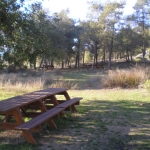
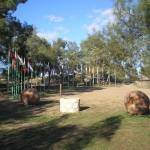
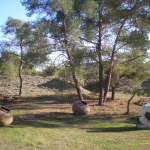
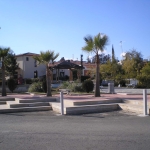
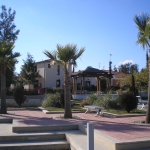
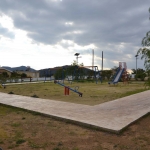
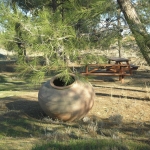
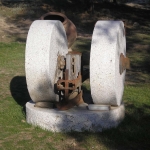
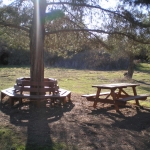
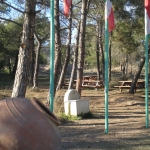
Source:
Kostas Papageorgiou, Pyrga, Beneath the stare of Stavrovouni, Lefkosia 2007
Picnic Area
Camping Site
Located in a tree-planted, green environment is the “Zoodochos Pigi” camping site. Camping expeditions are organized in cooperation with the Holy Bishopric of Larnaca. Many children participate in the camping programmes every year during the summer months. The Holy Bishopric of Larnaca undertakes the transfer of children to the camp site.
At the camping site there is a chapel operating as a confessional, a playground, and approximately 15 small wooden houses with a big yard where the children can have a pleasant time along with their supervisors. Each small house can accommodate up to eight children.
It is worth mentioning that there used to be a Camping Site in Pyrga since the beginning of the 1960s, which was located near the Glebe of Agia Varvara of Stavrovouni. Later on, however, in 1967, when the area was conferred to the state, the camping site was transferred at its current position, meaning across the Pyrga Primary School.
